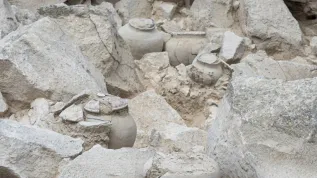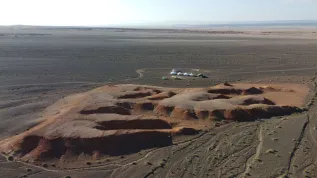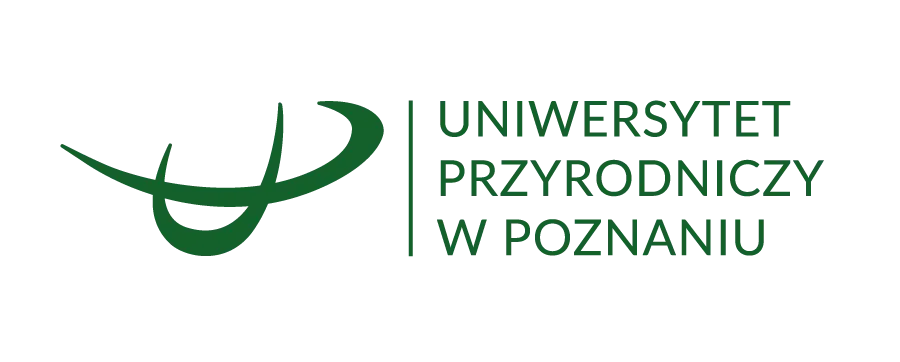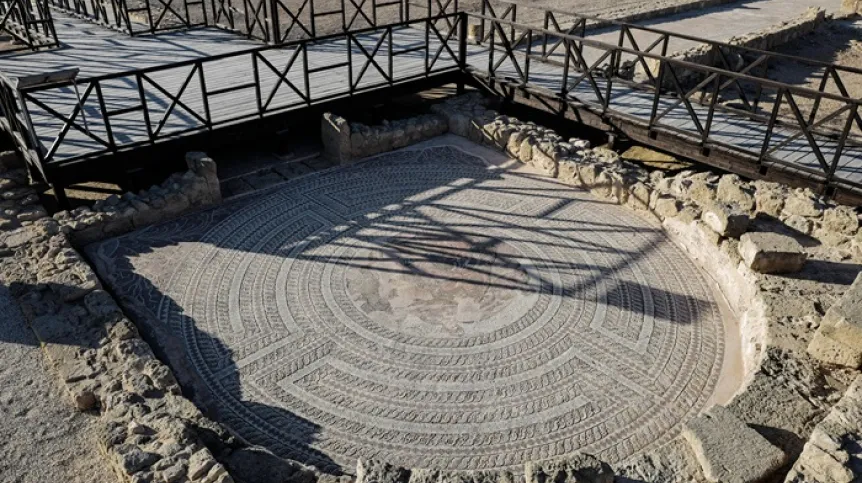
Polish archaeologists have been making discoveries in the ancient city of Nea Paphos in Cyprus for 60 years. During this time, the the Paphos archaeological complex has become a showcase of Cyprus, inscribed on the UNESCO World Heritage List. In the jubilee year of 2025, an international conference on Nea Paphos and an exhibition on Polish research are planned.
In ancient times, Cyprus was first on the border of Middle Eastern and Egyptian influences, and from the 2nd millennium BCE it belonged to the Greek civilization. The port cities, including Nea Paphos, had a huge impact on the development of civilization on the island. This thriving city was founded at the end of the 4th century BCE. Over time, it became the main administrative and political centre of Hellenistic and then Roman Cyprus (from ca. 200 BCE to ca. 350 CE).
Since 1965, an expedition of the Polish Centre of Mediterranean Archaeology of the University of Warsaw has been working at the archaeological site in Paphos. The first head of the Polish Archaeological Mission in Cyprus was Professor Kazimierz Michałowski. The work conducted by the University of Warsaw focused on the villa district called Maloutena.
Since 2011, an expedition of the Jagiellonian University has also been operating in the Paphos Archaeological Park, conducting research in the Agora, the central square of the city. In 2019, both expeditions were merged, which significantly broadened the scope of the research. They operate under the supervision of Professor Ewdoksia Papuci-Władyka.
'The research initiated by Professor Kazimierz Michałowski continues to this day, conducted by the longest-running foreign expedition in Cyprus and one of the longest-running Polish archaeological missions in the Mediterranean', says Professor Ewdoksia Papuci-Władyka.
During this time, Polish scientists made a number of spectacular discoveries. in Maloutena, they discovered, among other things, the remains of one of the largest ancient buildings in Cyprus - a Roman villa, probably the seat of the governor, today called the Villa of Theseus, decorated with wonderfully preserved mosaics. Their discoveries also include the House of Aion, with high-class mosaics. Polish researchers also changed the image of the beginnings and development of the city existing in publications, moving the date of the foundation of the Agora to the Hellenistic period.
'These achievements contributed to Paphos being inscribed on the UNESCO World Heritage List in 1980. This raised the prestige of the site, brought an increase in interest in Cyprus and mass tourism to Paphos. There is currently no organized tourist trip that would not come to Paphos to see the mosaics', the archaeologist says.
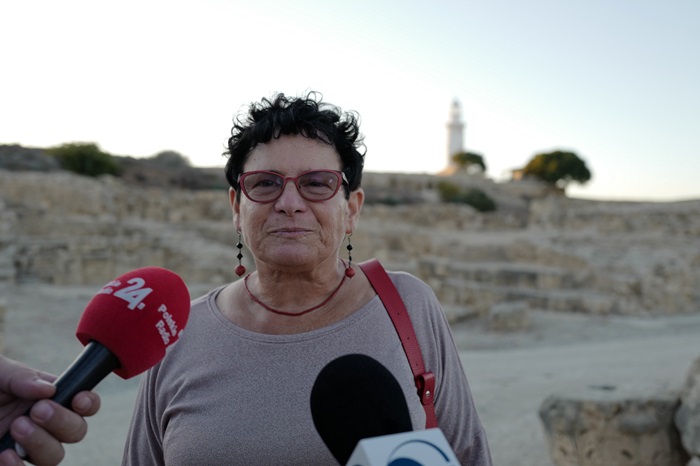
She admits that scientists still have a lot to discover in Paphos, and a lot of work to do in the next excavation seasons. 'Paphos is a paradise for archaeologists. This is a fantastic site, 55 hectares enclosed within the archaeological park. The area of three quarters of the ancient city has been secured for further research, not threatened by developing tourism and developers', she emphasises.
The researcher points out that thanks to the security and protection of the site, there is no need to fill in the excavations after the end of the season, and the favourable climate means that research can be conducted practically all year round. 'However, the excavation season usually lasts a maximum of six weeks, because that is how much funding from grants usually allows us', she adds.
The following weeks of work, however, involve processing the excavated material, which is only possible on site in Paphos. 'For example, pottery, which is a mass archaeological material, is excavated in dozens of buckets a day. Broken amphorae and kitchen vessels need to be washed, glued together, processed, photographed, and then published', the interviewee describes.
Recently, Polish archaeologists have been conducting research on the western edge of the city, where they have discovered fairly well-preserved walls of a building built probably in the Hellenistic period, in the 2nd century BCE. 'If our findings are confirmed, this would be an extremely important discovery. All the ancient buildings whose remains can be seen in various places in Paphos come from Roman times, and there are no large preserved fragments of Hellenistic buildings anywhere in the city. Cyprus was hit by numerous earthquakes that destroyed buildings. After these earthquakes, the terrain was levelled, cleaned up and new buildings were erected in the same place, partially using what had not collapsed. As a result, buildings from the earlier period are simply poorly preserved', the researcher explains.
Work on 3D reconstructions of Nea Paphos is also near completion. Scientists from the University of Warsaw, the Jagiellonian University and the Warsaw University of Technology joined forces to recreate the layout of streets and buildings that functioned in the ancient city at different periods of its development. The results of the project financed by the Polish National Science Centre have already been partially published in scientific journals.
'We will try to make these reconstructions available to a wide audience. In cooperation with the Department of Antiquities of Cyprus, we would like to make them available to tourists in some way, so that, for example, they can scan the QR code while visiting the archaeological park in Paphos and see them', Papuci-Władyka says.
Several events to popularise the achievements of archaeologists at this site have been planned to celebrate 60 years of Polish research in Paphos. The official opening of the Research Station in Paphos in Cyprus of the Polish Centre of Mediterranean Archaeology of the University of Warsaw, established in 2021, is scheduled for June 2025.
The opening, which will take place as part of the Polish presidency of the European Union, will be accompanied by a photography exhibition 'From Maloutena to the Agora'. 'It will show our achievements, the people working here, the changes that have occurred over the past 60 years. We will show what Paphos looked like in the past and what it looks like now', describes Professor Ewdoksia Papuci-Władyka. Earlier, May 15 to June 15, the exhibition will also be open for viewers from in Warsaw, and later - in Kraków and other cities in Poland. An international conference devoted to Paphos will be held in Warsaw and Kraków between on May 20-23. In addition to the University of Warsaw and the Jagiellonian University, the organisers include the Department of Antiquities of Cyprus, the University of Avignon and HiSoMA (ENS de Lyon). 'This is a periodical conference concerning only Paphos. The first one was held in Avignon in 2012, then in Paphos in 2017. In 2022, it took place in Athens. And now it will be in Poland', the researcher explains.
In the fall, residents of the city and tourists can count on special attractions. Researchers are planning an open day at the excavations. During the event, researchers and students will guide visitors and talk about the discoveries at Maloutena and the Agora. (PAP)
ekr/ zan/ amac/

